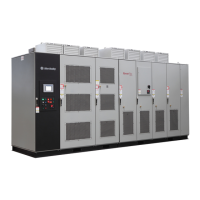124 Rockwell Automation Publication 6000-UM002E-EN-P - April 2018
Chapter 5 Preventative Maintenance and Component Replacement
Inspect Coils
If a coil exhibits evidence of overheating (cracked, melted or burned insulation),
it must be replaced. In that event, check for and correct overvoltage or
undervoltage conditions, which can cause coil failure. Be sure to clean any residue
of melted coil insulation from other parts of the device or replace such parts.
Inspect Contacts
Check contacts for excessive wear and dirt accumulations. Vacuum or wipe
contacts with a soft cloth if necessary to remove dirt. Contacts are not harmed by
discoloration and slight pitting. Do not file contacts. Do not use contact spray
cleaners as residues on magnet pole faces or in operating mechanisms can cause
sticking and can interfere with electrical continuity. Replace contacts only after
the contact face material is badly worn. Replace contacts in complete sets to avoid
misalignment and uneven contact pressure.
Inspect Pilot Lights
Replace any burned out lamps or damaged lenses. Do not use solvents or cleaning
agents on the lenses.
Do not use test equipment for solid-state controls which is not factory
recommended. Doing so can result in damage to the control or test equipment, or
unintended actuation of the controlled equipment.
Solid-state devices require little more than a periodic visual inspection. Replace
discolored, charred, or burned components. Necessary replacements should be
made only at the PC board or plug-in component level. Verify the printed circuit
boards are seated in the edge board connectors. Board locking tabs should also be
in place. Protect solid-state devices from contamination, and maintain
appropriate cooling provisions. Do not use solvents on printed circuit boards.
Inspect Locking and Interlocking Devices
Check these devices to verify proper working condition. Make any necessary
replacements only with Allen-Bradley renewal parts or kits. Adjust or repair only
in accordance with Allen-Bradley instructions found in the product User
Manuals.

